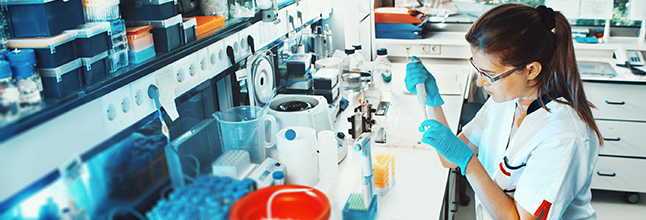The SARS-COV-2 virus has captured the world’s attention in just a few short months. We watched the scientific community respond to a new disease, isolate the virus, suss out its genetic code, and determine its immunological characteristics.
Within healthcare facilities the world over, both existing and new protocols went into hyperdrive. Laboratory assays were created and sold. Dozens of Clinical Trials were initiated. PPE protocols were updated. Testing Procedures and Competency Assessments had to be created and rolled out to staff in labs across the nation. Drug Compounding protocols and Clinical Trial documentation were created, approved, and distributed. Supply chain had to get creative, reaching out to new suppliers. Environmental Services had to adapt cleaning and disinfection procedures. BioMed had to validate and do electrical safety checks on ventilators. Diagnostic criteria had to be formulated, sent out, then reformulated and disseminated once again as more reliable data became available.
All of this happened in an incredibly short period of time. Many of you were probably involved in that effort. No doubt there was a flurry of activity – meetings, conference calls, video chats, and more – as you responded to a rapidly changing situation.
We might finally be past the peak rate of hospitalization, and several States are discussing how to safely reopen businesses, mass transit, restaurants and more. I wouldn’t say we’re catching our breath yet, but it’s possible we have a bit of time to at least pause and reflect on what just transpired over the last three months.
Here are a few questions to consider:
- What if anything could your facility have done differently in the Summer or Fall of 2019 that would have made your facility’s response better – faster – more able to meet needs?
- How would you have prepared differently with what you know now?
- What processes have you created in the last three months that were lacking?
- What systems are still tied to paper and need to be automated?
- Can you effectively communicate to staff “on the floor” quickly and effectively?
- How do you manage change and ensure adoption across an entire Enterprise with a situation that changes hourly or daily?
- Had you considered automating any procedures or processes and now wish you had?
I suspect that none of us has the answers to all of these questions, much less the host of similar issues each of you can imagine. However, we can inform each other through sharing our breakthroughs, best practices and experiences. Healthcare workers are already known for being passionate about sharing their findings and ideas openly with their colleagues.
To that end, StaffReady is sponsoring a new working group on LinkedIn called Clinical Workforce Management. It is intended to be a non-commercial forum for discussions, advice, and best practices for managing staff in the healthcare sector, with an eye towards automation where possible.
A sample topic of discussion in this working forum could be automation. Laboratories are often mired in paperwork and delays when rolling out new policies, procedures, and assessments and with corresponding documentation of compliance. How can automation practically assist? Are the same challenges seen in Pharmacy, Nursing, Radiology or elsewhere?
As an example, a multi-hospital system in the Midwest recently rolled out a competency assessment for a new SARS-COV-2 assay to multiple hospitals in two states in the matter of an afternoon. Within hours, twelve key staff members had been assessed at one facility, and assessments had rolled out to another 200+ staff members at 22 remaining facilities. Real-time dashboards and reports allowed management to follow progress and enforce standards. Being part of this LinkedIn forum would allow you access to such stories, conversations and insights from colleagues across North America and around the world.
In fact, there is a good chance you have answers and insights that others might need.
We’ve entered a new world with managing pandemics in realtime. Now more than ever, we need to share our ideas and solutions with our colleagues so that we are better prepared in daily management practices and in any potential future large scale epidemiological crises that affect our citizens and health systems.



